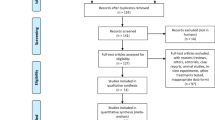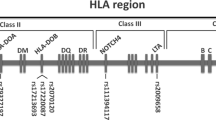Abstract
Neutropenia and infection are major dose-limiting side effects of chemotherapy. The risk of initial infection and subsequent complications are directly related to the depth and duration of neutropenia. Recent genome-wide association studies identified variants in DARC and CXCL2 genes, and in ORMDL3-GSDMA-CSF3 locus on chromosome 17q21 that influence white blood cell and neutrophil counts in healthy individuals. To investigate whether polymorphisms in these loci in conjunction with chemotherapy may modulate risk of treatment complications, we analyzed 21 SNPs across these genes for an association with chemotherapy-related neutropenia and infection in 286 Caucasian children with acute lymphoblastic leukemia. After correction for multiple testing, DARC polymorphism rs3027012 in 5′-UTR was associated with higher risk of low absolute phagocyte count (APC<500 and <1000 cells per microliter, P=0.001 and P<0.0005, respectively) and hospitalization due to febrile neutropenia (P=0.002). Protective effect was instead seen for DARC rs12075 A to G substitution (P=0.004). The SNP rs3859192 in the GSDMA were associated with hospitalization due to infection (P=0.004); infection was also modulated in the additive manner by the CXCL2 rs16850408 (P=0.002). This study shows for the first time that the variations in DARC, GSDMA and CXCL2 genes may play a role in the onset of chemotherapy complications.
This is a preview of subscription content, access via your institution
Access options
Subscribe to this journal
Receive 6 print issues and online access
$259.00 per year
only $43.17 per issue
Buy this article
- Purchase on Springer Link
- Instant access to full article PDF
Prices may be subject to local taxes which are calculated during checkout


Similar content being viewed by others
References
Pui CH, Mullighan CG, Evans WE, Relling MV . Pediatric acute lymphoblastic leukemia: where are we going and how do we get there? Blood 2012; 120: 1165–1174.
O’Connor D, Bate J, Wade R, Clack R, Dhir S, Hough R et al. Infection-related mortality in children with acute lymphoblastic leukemia: an analysis of infectious deaths on UKALL2003. Blood 2014; 124: 1056–1061.
Merryman R, Stevenson KE, Gostic WJ, Neuberg D, O'Brien J, Sallan SE et al. Asparaginase associated myelosuppression and effects on dosing of other chemotherapeutic agents in childhood acute lymphoblastic leukemia. Pediatr Blood Cancer 2012; 59: 925–927.
Lyman GH . Impact of chemotherapy dose intensity on cancer patient outcomes. J Natl Compr Canc Netw 2009; 7: 99–108.
Palazzi DL . The use of antimicrobial agents in children with fever during chemotherapy-induced neutropenia: the importance of risk stratification. Pediatr Infect Dis J 2011; 30: 887–890.
Rippey JJ . Leucopenia in West Indians and Africans. Lancet 1967; 290: 44.
Haddy TB, Rana SR, Castro O . Benign ethnic neutropenia: what is a normal absolute neutrophil count? J Lab Clin Med 1999; 133: 15–22.
Kourtis AP, Bramson B, Van Der Horst C, Kazembe P, Ahmed Y, Chasela C et al. Low absolute neutrophil counts in African infants. J Int Assoc Physicians AIDS Care 2005; 4: 73–76.
Denic S, Showqi S, Klein C, Takala M, Nagelkerke N, Agarwal MM . Prevalence, phenotype and inheritance of benign neutropenia in Arabs. BMC Hematol 2009; 9: 3.
Nalls MA, Wilson JG, Patterson NJ, Tandon A, Zmuda JM, Huntsman S et al. Admixture mapping of white cell count: genetic locus responsible for lower white blood cell count in the Health ABC and Jackson Heart studies. Am J Hum Genet 2008; 82: 81–87.
Reiner AP, Lettre G, Nalls MA, Ganesh SK, Mathias R, Austin MA et al. Genome-wide association study of white blood cell count in 16,388 African Americans: the continental origins and genetic epidemiology network (COGENT). PLoS Genet 2011; 7: e1002108.
Crosslin DR, McDavid A, Weston N, Nelson SC, Zheng X, Hart E et al. Genetic variants associated with the white blood cell count in 13,923 subjects in the eMERGE Network. Hum Genet 2012; 13: 639–652.
Paz Z, Nalls M, Ziv E . The genetics of benign neutropenia. IMAJ 2011; 13: 625–629.
Pruenster M, Mudde L, Bombosi P, Dimitrova S, Zsak M, Middleton J et al. The Duffy antigen receptor for chemokines transports chemokines and supports their promigratory activity. Nat Immunol 2009; 10: 223.
Kangelaris KN, Sapru A, Calfee CS, Liu KD, Pawlikowska L, Witte JS et al. The association between a Darc gene polymorphism and clinical outcomes in African American patients with acute lung injury. Chest J 2012; 141: 1160–1169.
Soranzo N, Spector TD, Mangino M, Kühnel B, Rendon A, Teumer A et al. A genome-wide meta-analysis identifies 22 loci associated with eight hematological parameters in the HaemGen consortium. Nat Genet 2009; 41: 1182–1190.
Nalls MA, Couper DJ, Tanaka T, Van Rooij FJ, Chen MH, Smith AV et al. Multiple loci are associated with white blood cell phenotypes. PLoS Genet 2011; 7: e1002113.
Ceppi F, Langlois-Pelletier C, Gagné V, Rousseau J, Ciolino C, De Lorenzo S et al. Polymorphisms of the vincristine pathway and response to treatment in children with childhood acute lymphoblastic leukemia. Pharmacogenomics 2014; 15: 1105–1116.
Tanfous MB, Sharif-Askari B, Ceppi F, Laaribi H, Gagné V, Rousseau J et al. Polymorphisms of asparaginase pathway and asparaginase-related complications in children with acute lymphoblastic leukemia. Clin Cancer Res 2015; 21: 329–334.
Silverman LB, Stevenson KE, O'Brien JE, Asselin BL, Barr RD, Clavell L et al. Long-term results of Dana-Farber Cancer Institute ALL Consortium protocols for children with newly diagnosed acute lymphoblastic leukemia (1985–2000). Leukemia 2010; 24: 320–334.
Carlson CS, Eberle MA, Rieder MJ, Yi Q, Kruglyak L, Nickerson DA . Selecting a maximally informative set of single-nucleotide polymorphisms for association analyses using linkage disequilibrium. Am J Hum Genet 2004; 74: 106–120.
Labuda D, Krajinovic M, Richer C, Skoll A, Sinnett H, Yotova V et al. Rapid detection of CYP1A1, CYP2D6, and NAT variants by multiplex polymerase chain reaction and allele-specific oligonucleotide assay. Anal Biochem 1999; 275: 84–92.
Storey JD, Taylor JR, Sigmund D . Strong control, conservative point estimation, and simultaneous conservative consistency of false discovery rates: a unified approach. J R Stat Soc, Series B 2004; 66: 187–205.
Schnabel RB, Baumert J, Barbalic M, Dupuis J, Ellinor PT, Durda P et al. Duffy antigen receptor for chemokines (Darc) polymorphism regulates circulating concentrations of monocyte chemoattractant protein-1 and other inflammatory mediators. Blood 2010; 115: 5289–5299.
Yang C, Yu KD, Xu WH, Chen AX, Fan L, Ou ZL et al. Effect of genetic variants in two chemokine decoy receptor genes, DARC and CCBP2, on metastatic potential of breast cancer. PloS ONE 2013; 8: e78901.
Yu KD, Wang X, Yang C, Zeng XH, Shao ZM . Host genotype and tumor phenotype of chemokine decoy receptors integrally affect breast cancer relapse. Oncotarget 2015; 6: 26519.
Velasquez IM, Kumar J, Björkbacka H, Nilsson J, Silveira A, Leander K et al. Duffy antigen receptor genetic variant and the association with Interleukin 8 levels. Cytokine 2015; 72: 178–184.
Voruganti VS, Laston S, Haack K, Mehta NR, Smith CW, Cole SA et al. Comuzzie AG. Genome-wide association replicates the association of Duffy antigen receptor for chemokines (DARC) polymorphisms with serum monocyte chemoattractant protein-1 (MCP-1) levels in Hispanic children. Cytokine 2012; 60: 634–638.
Comuzzie AG, Cole SA, Laston SL, Voruganti VS, Haack K, Gibbs RA et al. Novel genetic loci identified for the pathophysiology of childhood obesity in the Hispanic population. PloS ONE 2012; 7: e51954.
Miller MF, Cohen ED, Baggs JE, Hogenesch JB, Morrisey EE . High throughput genomic screen identifies multiple factors that promote cooperative Wnt signaling. PloS ONE 2013; 8: e55782.
Jung YS, Lee HY, Kim SD, Park JS, Kim JK, Suh PG et al. Wnt5a stimulates chemotactic migration and chemokine production in human neutrophils. Exp Mol Med 2013; 45: e27.
Kulkarni H, Marconi VC, He W, Landrum ML, Okulicz JF, Delmar J et al. The Duffy-null state is associated with a survival advantage in leukopenic HIV-infected persons of African ancestry. Blood 2009; 114: 2783–2792.
Ramsuran V, Kulkarni H, He W, Mlisana K, Wright EJ, Werner L et al. Duffy-Null–associated low neutrophil counts influence HIV-1 susceptibility in high-risk South African black women. Clin Infect Dis 2011; 52: 1248–1256.
Vergara C, Tsai YJ, Grant AV, Rafaels N, Gao L, Hand T et al. Gene encoding Duffy antigen/receptor for chemokines is associated with asthma and IgE in three populations. Am J Respiratory Crit Care Med 2008; 178: 1017–1022.
Okada Y, Kamatani Y, Takahashi A, Matsuda K, Hosono N, Ohmiya H et al. Common variations in PSMD3–CSF3 and PLCB4 are associated with neutrophilcount. Hum Mol Genet 2010; 19: 2079–2085.
Moffatt MF, Gut IG, Demenais F, Strachan DP, Bouzigon E, Heath S et al. A large-scale, consortium-based genomewide association study of asthma. N Engl J Med 2010; 363: 1211–1221.
Barrett JC, Hansoul S, Nicolae DL, Cho JH, Duerr RH, Rioux JD et al. Genome-wide association defines more than 30 distinct susceptibility loci for Crohn's disease. Nat Genet 2008; 40: 955–962.
Barrett JC, Clayton DG, Concannon P, Akolkar B, Cooper JD, Erlich HA et al. Genome-wide association study and meta-analysis find that over 40 loci affect risk of type 1 diabetes. Nat Genet 2009; 41: 703–707.
Lluis A, Schedel M, Liu J, Illi S, Depner M, von Mutius E et al. Asthma-associated polymorphisms in 17q21 influence cord blood ORMDL3 and GSDMA gene expression and IL-17 secretion. J Allergy Clin Immunol 2011; 127: 1587–1594.
Christopher MJ, Link DC . Regulation of neutrophil homeostasis. Curr Opin Hematol 2007; 14: 3–8.
Nguyen-Jackson H, Panopoulos AD, Zhang H, Li HS, Watowich SS . STAT3 controls the neutrophil migratory response to CXCR2 ligands by direct activation of G-CSF–induced CXCR2 expression and via modulation of CXCR2 signal transduction. Blood 2010; 115: 3354–3363.
Flores C, Maca-Meyer N, Perez-Mendez L, Sangüesa R, Espinosa E, Muriel A et al. A CXCL2 tandem repeat promoter polymorphism is associated with susceptibility to severe sepsis in the Spanish population. Genes Immun 2006; 7: 141–149.
Acknowledgements
We thank all patients and their parents who consented to participate in genetics studies related to leukemia. Coast to Coast against Cancer Foundation, Leukemia Lymphoma Society of Canada, Canadian Institutes of Health Research and Charles Bruneau Foundation, supported this study.
Author information
Authors and Affiliations
Corresponding author
Ethics declarations
Competing interests
The authors declare no conflict of interest.
Additional information
Supplementary Information accompanies the paper on the The Pharmacogenomics Journal website
Supplementary information
PowerPoint slides
Rights and permissions
About this article
Cite this article
Glisovic, S., Pastore, Y., Gagne, V. et al. Impact of genetic polymorphisms determining leukocyte/neutrophil count on chemotherapy toxicity. Pharmacogenomics J 18, 270–274 (2018). https://doi.org/10.1038/tpj.2017.16
Received:
Revised:
Accepted:
Published:
Issue Date:
DOI: https://doi.org/10.1038/tpj.2017.16
This article is cited by
-
Presence of “ACKR1/DARC null” polymorphism in Arabs from Jisr az-Zarqa with benign ethnic neutropenia
Pediatric Research (2022)
-
Characterizing Chemotherapy-Induced Neutropenia and Monocytopenia Through Mathematical Modelling
Bulletin of Mathematical Biology (2020)



